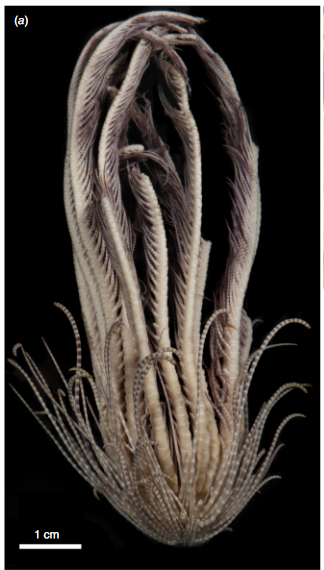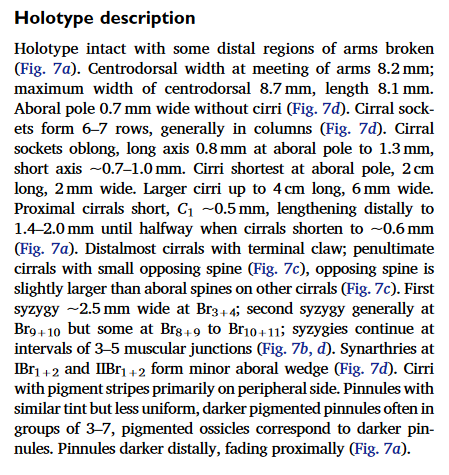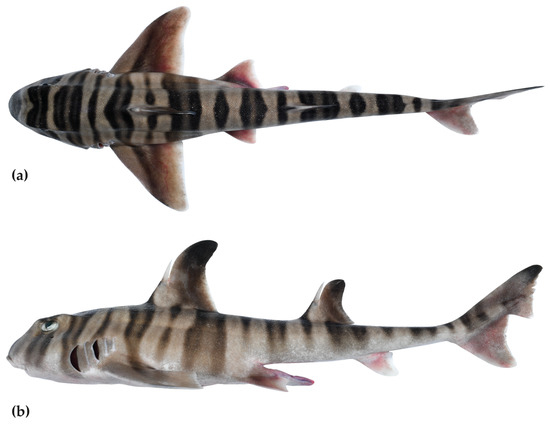
Living species. At least one specimen must break 1kg. (For aquatic species, this ignores the weight of water that can be easily removed, e.g. wringing out a sponge.)
In order to resolve YES, the scientific community must come to recognize it as a distinct species in between market creation and close. If there was a debate over whether to consider a variation a different species, that doesn't count.
People are also trading
@Charlie From the underlying paper, it is somewhat unclear whether this is a new species never seen before or a known variant now recognized as a new species. In any case, the description in the paper makes it clear the specimen is just couple centimeters in size and thus almost certainly weighs less than 1kg.


@Charlie You are welcome. Just for transparency, the underlying paper is at https://doi.org/10.1071/IS22057 (paywalled, unfortunately)
Will the question resolve Yes if a specimen is discovered in an earlier year and a paper describing the new species is published in 2023-2027?
Is it required that the publication specify the specimen weight or if it the specimen is reasonably much larger than 1kg (like a 2m snake), then does the question resolve Yes?
@WesleyJB If I can be confident the weight is >=1kg, that suffices.
Description updated for the first question.
@IsaacKing I think there has been one then:
Species in Disguise: A New Species of Hornshark from Northern Australia (Heterodontiformes: Heterodontidae), Received: 20 June 2023 / Revised: 10 July 2023 / Accepted: 11 July 2023 / Published: 12 July 2023, https://www.mdpi.com/1424-2818/15/7/849#
"Heterodontus marshallae n. sp. was previously considered to be conspecific with H. zebra from the Western Pacific."
If you put the 54.1cm length of the holotype into a sporting fish calculator, the weight estimate range is 1.25-3.6kg and if you put in the largest 60.1cm paratype specimen in, the weight estimate is 1.7-5kg. https://www.omnicalculator.com/sports/fish-weight
"Holotype: WAM P.35408-007, adolescent male, 541 mm TL [total length], west of Exmouth Peninsula, Ningaloo Marine Park (Commonwealth waters), Western Australia, 22°22.946′ S, 113°40.308′ E, 210–212 m depth, 23 November 2022.
Paratypes (n = 6): CSIRO CA 3286, juvenile male, 432 mm TL, north of Port Hedland, Western Australia, 18°33′ S, 118°22.3′ E, 150 m depth, 28 March 1982; CSIRO H 6581–01, female, 580 mm TL, northwest of Cape Leveque, Western Australia, 14°58.69′ S, 121°40.18′ E, 191–202 m depth, 28 June 2007; NTM S.12929-001, adult male, 575 mm TL, north of Bathurst Island, Arafura Sea, Northern Territory, 10°10.02′ S, 130°04.02′ E, 125 m depth, 16 November 1990; NTM S.18275-001, egg case (wet), southeast of Evans Shoal, Arafura Sea, Northern Territory, 10°08′ S, 130°05′ E, 131 m depth, 1 October 1998; WAM P.26193-010, female, 355 mm TL, 150 km north-northeast of Rosemary Island, Western Australia, 22°22′ S, 113°29′ E, 170–172 m depth, 16 May 1978; WAM P.30424-001, adult male, 601 mm TL, east of Exmouth Peninsula, Western Australia, 22°22′ S, 113°40′ E, 221–229 m depth, 29 September 1990."
@WesleyJB Nice find - I am not sure this clears the bar set by "If there was a debate over whether to consider a variation a different species, that doesn't count." as the paper has "Heterodontus marshallae n. sp. was previously considered to be conspecific with H. zebra from the Western Pacific."
It doesn't look there was a significant debate over whether it was a variation. Previous authorship was aware that there were differences between the specimens of the H zebra and the new H Marshallae, but hadn't yet declared it a new species. "Naylor et al. found that the sequence of the NADH2 gene of H. zebra from northern Australia was different from H. zebra from Japan and Malaysian Borneo. They suggested that the northern Australian population is probably an undescribed species and is referred to as H. cf. zebra."
Can we get a verdict please?
@IsaacKing Oh, I see the confusion. My understanding was that the criteria were meant to exclude the case where a paper settles a preexisting debate whether something is a separate species (since that means the new finds are not completely new). Now I see that you meant to exclude situations where the paper starts a new debate . As a yes holder, I obviously don't protest a positive resolution.
@IsaacKing From the paper:
Naylor et al. [14] found that the sequence of the NADH2 gene of H. zebra from northern Australia was different from H. zebra from Japan and Malaysian Borneo. They suggested that the northern Australian population is probably an undescribed species and is referred to as H. cf. zebra. The fact that H. cf. zebra was genetically closer to H. portusjacksoni (average pairwise difference of 13 nucleotides for NADH2) than it was to the true H. zebra samples (average pairwise difference of 24) provides compelling support for the separation of the northern Australian population as a distinct species."
And
In this paper, specimens of H. cf. zebra from northern Australia were compared to true H. zebra specimens from the Northwest Pacific and to the type of Cestracion amboinensis to determine whether they refer to a new species.
They further refer to https://ris.cdu.edu.au/ws/portalfiles/portal/45696628/Kyne_etal_Shark_Action_Plan_2021.pdf which has
The action resolve nomenclature is required for 8 species, where the current names of these species may not be correct for the species
occurring in Australian waters: [...] Heterodontus zebra, [...]
So this appears to be a redefinition to me...
@Charlie Most likely no: the underlying publication has images (Figure 5, https://www.mdpi.com/2077-1312/11/6/1240) which imply that even the bigger specimens would likely fit well within a 10x10x10cm cube and thus would unlikely weigh above 1kg even if the water content is counted. The sponges are very porous, so if water in the sponge's channels and pores (i.e. the water you could get out by squeezing a bit, without drying) is excluded, they would likely weigh much less.
,

